Pep Guardiola has made a revolution at Manchester City with his distinguished tactics and drive for success. After winning the Premier League twice in 2017/18 and 2018/19 and dominating in the internal cups too, the team started struggling last season and gave away their leadership to Liverpool.
Although the team finished as runners up it was noticeable that they were struggling in certain areas and starting to lose their consistency. This made them unable to defend their title but also pushed them away from one of their main goals – the Champions League title.
One of the reasons for their inconsistency was the absence of their captain Vincent Kompany who left the club after 11 years as part of their defensive set-up. But they didn’t miss him only defensively. As a ball-playing centre-back, Kompany was a key figure in their build-up actions and in executing Guardiola’s possession-based style of play.
They failed to find a replacement in the 2019/20 season and the whole team performance was affected by it. They invested in bringing in a defensive midfielder in the face of Rodri but his arrival wasn’t enough to improve the connection between the lines and fill in the gap in the backline.
They were lacking a leading figure that will support both their defensive and attacking actions.
After missing on both the Premier League and the Champions League, Manchester City immediately made a move for a ball-playing centre-back that fits their profile.
Little did they know that their new signing Rúben Dias was about to transform the team completely.
“It wasn’t expected, honestly. We knew his quality, but you never know what is going to happen.” underlined the manager Guardiola quoted by The Independent. “If a defender plays for himself it’s a problem but he is thinking always about his central defensive partner, his holding midfielder, even the wingers. He’s so generous, he’s a complete professional.”
With these words, the Spaniard described the 24-year-old who fits their strategy like a glove and turned into one of their key players that led them to the 2020/21 league title and also to reach the long-awaited Champions League final.
This scout report in the form of tactical analysis examines Dias’ main traits and how he improved City’s performance by fitting to their tactics perfectly.
Strengths and weaknesses

Dias is equally important for both the defensive actions and the build-up play. While he shows great composure and anticipation skills in defence, he also shows confidence on the ball and strong work under pressure.
He reads the game well and shows intelligence in his movement and actions. His awareness often allows him to win the ball through his positioning and anticipation skills and his smart pressing movement is often beneficial for the team.
He doesn’t dive into many ground challenges and his concentration helps him to avoid committing fouls. While he doesn’t often dive into risky duels, he does use his physical strength to recover the ball and gain back possession which he could then use to start the team’s offensive movement. As the manager mentioned, he always looks out for his centre-defence partner and supports his actions. He was most frequently paired with John Stones who also saw a huge improvement in his form, partly thanks to the leading figure that Dias is.
What he lacks defensively is a distinguished aerial presence. He is rather successful in the air but simply doesn’t contribute with many efforts which is unlikely for a centre-back. He also sometimes has difficulties defending in transitions against pacey players but does compensate with the right timing of his interventions in the defensive third.
While he is an important part of the defensive set-up, his biggest contribution is to the build-up play and retaining possession. Dias is confident on the ball and helps in circulating the ball at the back and his solid work under pressure is very beneficial against teams that employ a high press.
His passing abilities and spatial awareness are crucial in building up from the back where he often has to find the holding midfielder or the wide players in aim to progress the ball.
Data profile and comparison
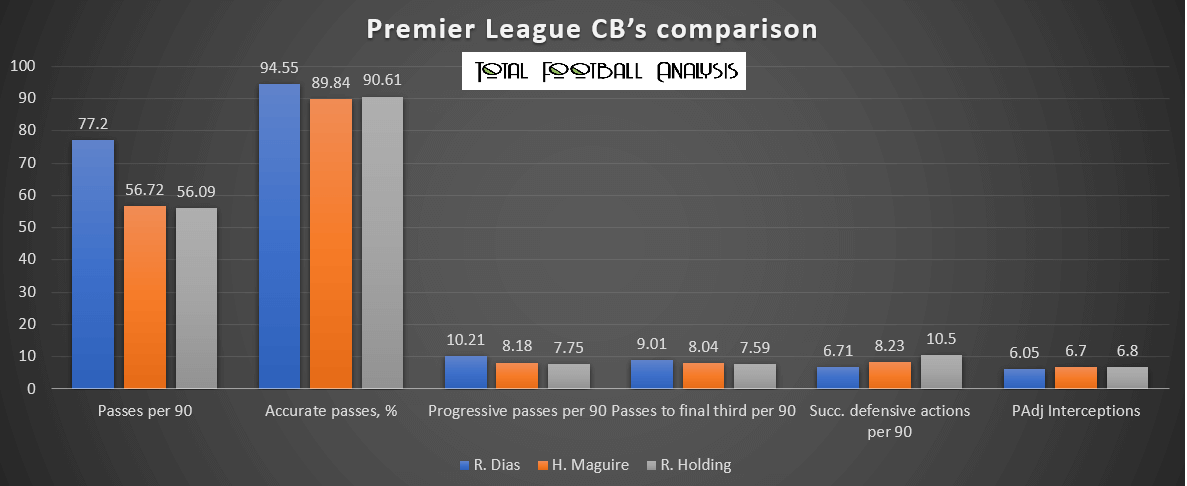
We extracted both defensive and offensive data for the Premier League centre-backs with 25+ games this season aiming to compare Dias to the best individual performers.
We narrowed the list down to ball-playing defenders with a similar profile and then filtered based on different indicators to find the best individual performers in each.
Among the regular starters, Dias expectedly showed up among the best performers, followed by Manchester United’s Harry Maguire and surprisingly by Arsenal’s Rob Holding. Despite the Gunners’ unsatisfying team performance, it turned out that Holding’s individual performance was excellent compared to the best central defenders in the league.
We focused on their contribution to the ball progression and to the attacking ventures but also included some defensive stats.
As shown in the graph above the first indicator we picked was their Passes per 90, where we could see that Dias excels. He completed 77.2 passes on average per game which is the best record for a centre-back in the league. This shows his importance for City’s possession-based approach. Maguire and Holding have completed 56.72 and 56.09 passes respectively in efforts to retain possession.
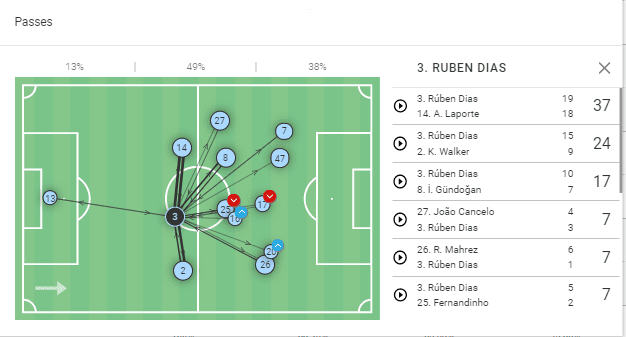
The Portuguese international also excels in his accuracy. His 94.4% pass accuracy is crucial for the team’s efficient build-up and attacking movement. For comparison, Maguire and Holding have been less efficient in their passing efforts which could be a sign of poorer work under pressure.
Dias has completed the most progressive passes per 90 too, which shows his constant aim to progress the ball and find his teammates in the advanced areas. Of course, his success in this might be a result of City’s more advanced positioning and their extended time on the ball. For example, teams are more likely to play more aggressively against Manchester United and Arsenal, which often forces the players to send lateral passes or even send the ball back.
All three players have almost similar numbers in terms of passes to the final third. The centre-backs’ involvement in delivering ball directly to the final third underlines the importance of their role in the team’s attacking actions.
When it comes to successful defensive actions, we can see that Dias has the lowest numbers among the three players. This does not necessarily mean that he is less efficient defensively compared to Maguire and Holding. His defensive contribution is often narrowed to his off-the-ball movement and pressing efforts. He completes 6.05 PAdj interceptions on average, which is less than his fellow defenders, but that’s where the whole team performance should be considered. The Citizens usually spend less time on defending and have more time on the ball which makes him more efficient compared to Holding for example, who had a higher number of efforts due to Arsenal being pinned at the back more frequently.
Dias’ role is focused on his support to the build-up play rather than on the defensive actions. This is also underlined by his Recoveries per 90. He recovers the ball 8.05 times on average, fewer than Holding (9.55) and Maguire (11.91).
His defensive importance
City ended the Premier League season with the best defensive record in the league, conceding 32 goals and Dias has been an integral part of their efficiency at the back. He added to City’s defensive performance not only technically but also mentally.
At only 24 years of age, he accepted Kompany’s role as a leader in their defensive set-up and is very vocal on the pitch, supporting his teammates and boosting their confidence. His vision and his anticipating skills allow him to give instructions and complement his fellow players’ movement and actions. His ability to play both as left and right centre-back depending on who he is paired with is very beneficial for the team as it allows more defensive variations.
Anticipating the opposite players’ movement as well as being aware of his teammates’ positioning is one of his biggest strengths that make him successful in defence, especially when defending against positional attacks and not counters. He rarely gets his men out of sight and constantly moves in efforts to mark them and not allow any runs to the box. His awareness is very beneficial in terms of recovering the ball in City’s half. He is important for gaining back possession and slowing down the tempo while the team move into attacking positions again.
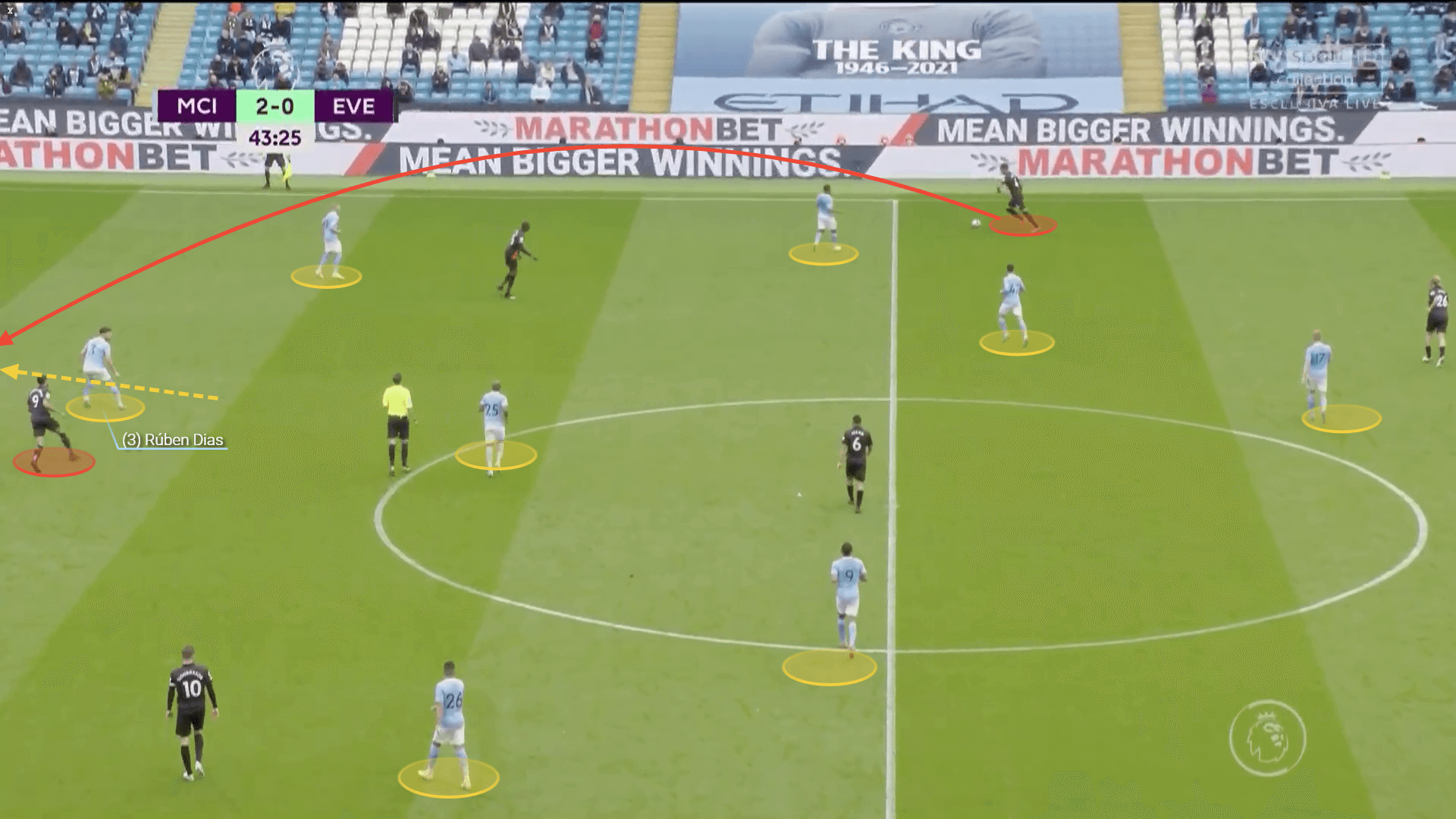
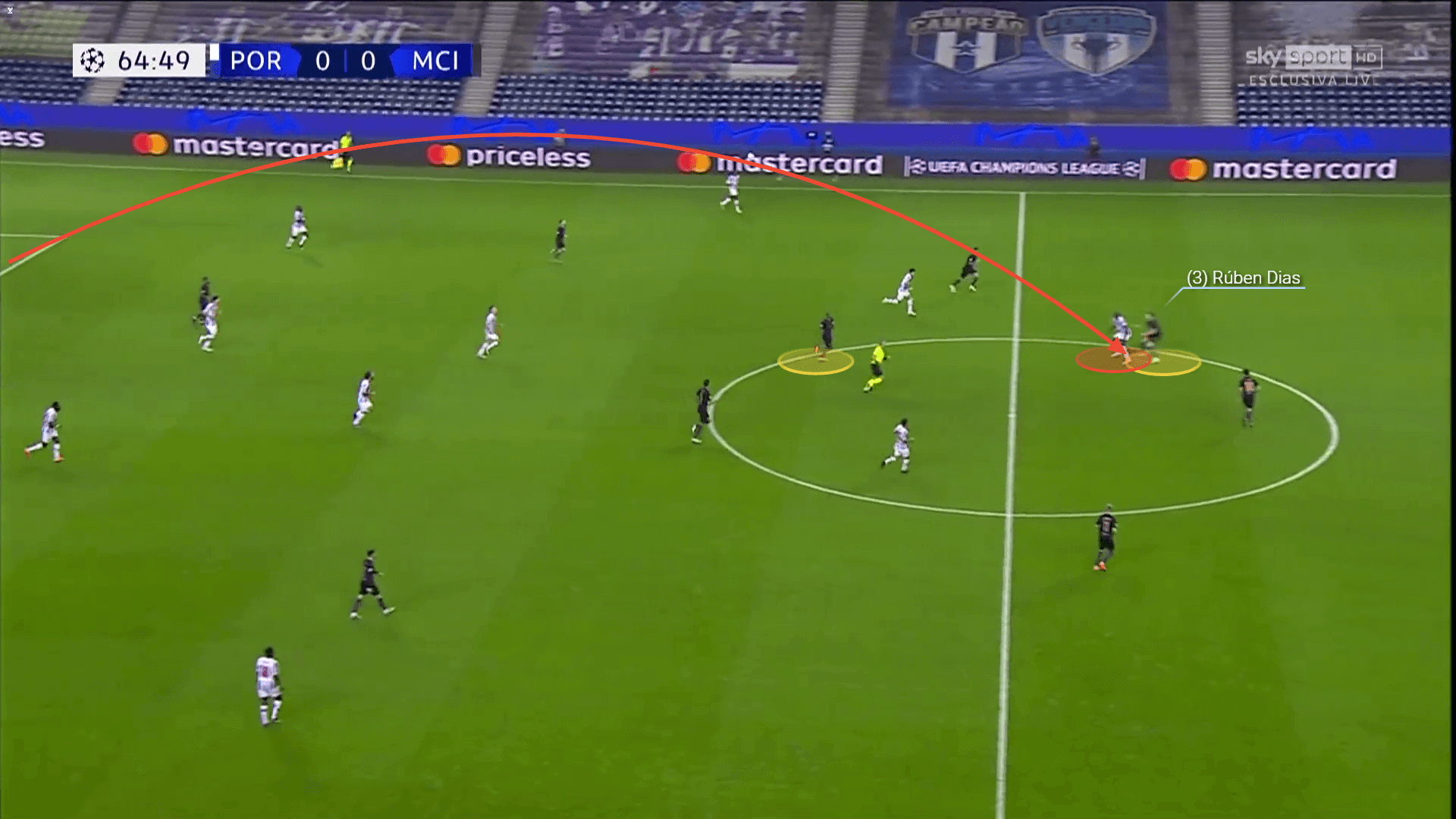
One of his weaker areas is his movement in defensive transitions. He is often unable to close out spaces against fast players who try to exploit open spaces behind the backline. This most frequently happens either when caught on a counter or when the opposition rely on a direct play or long balls. Luckily, his actions rarely result in conceding dangerous chances due to the whole team’s pressing efforts. Both the attack and the midfield are involved in pressing and supporting the backline which rarely leaves the defenders exposed.
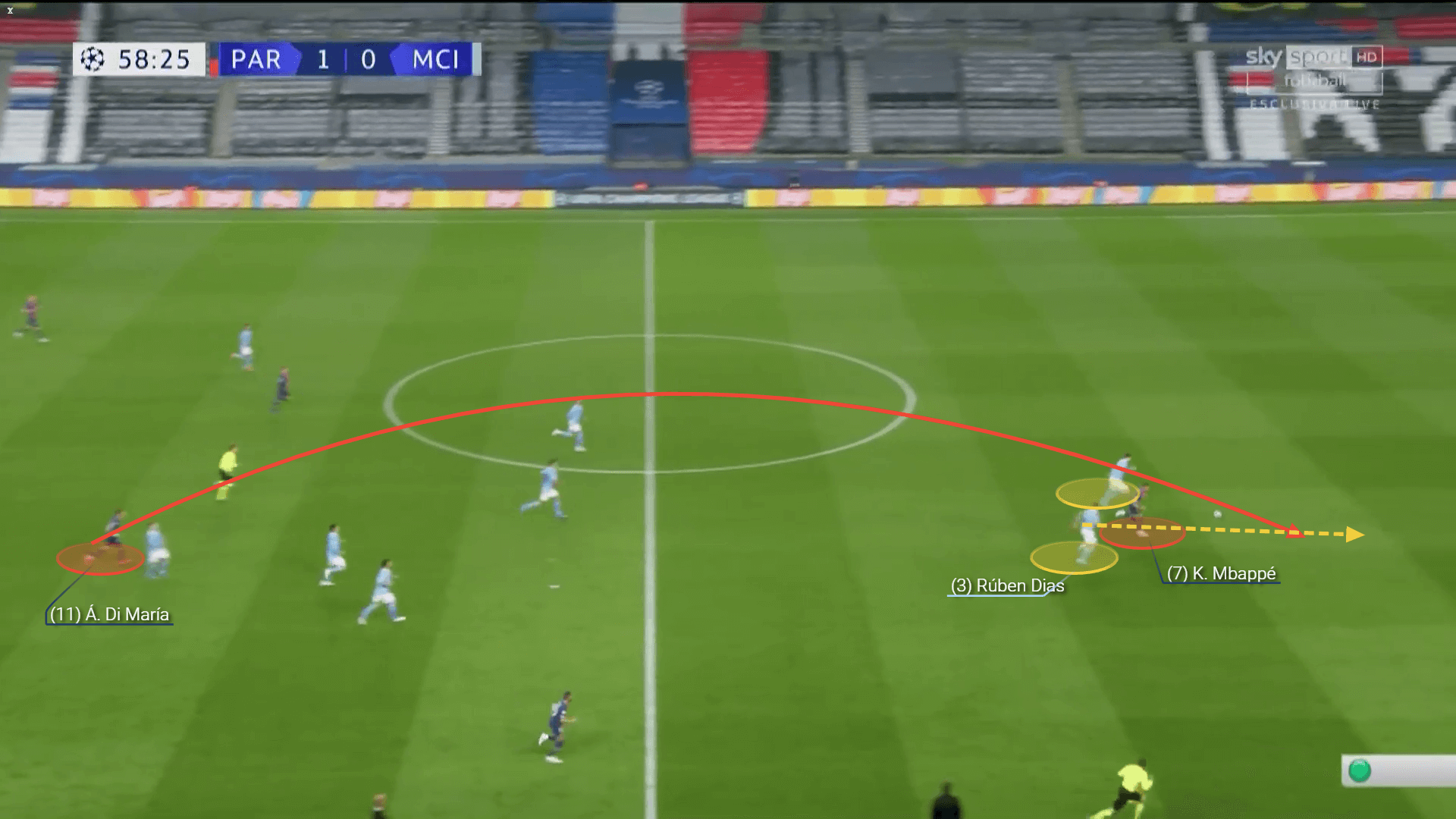
His role in offensive transitions and the Dias – Stones partnership
City’s favoured formation is 4-3-3 although Guardiola often switches to 4-2-3-1. This set-up often transforms into a more attacking 3-2-5 in possession which allows the team to occupy the advanced areas and retain possession in the opposition half. Forming a back-three helps them in maintaining their advanced positioning and in involving more players in their ball progression and attack.
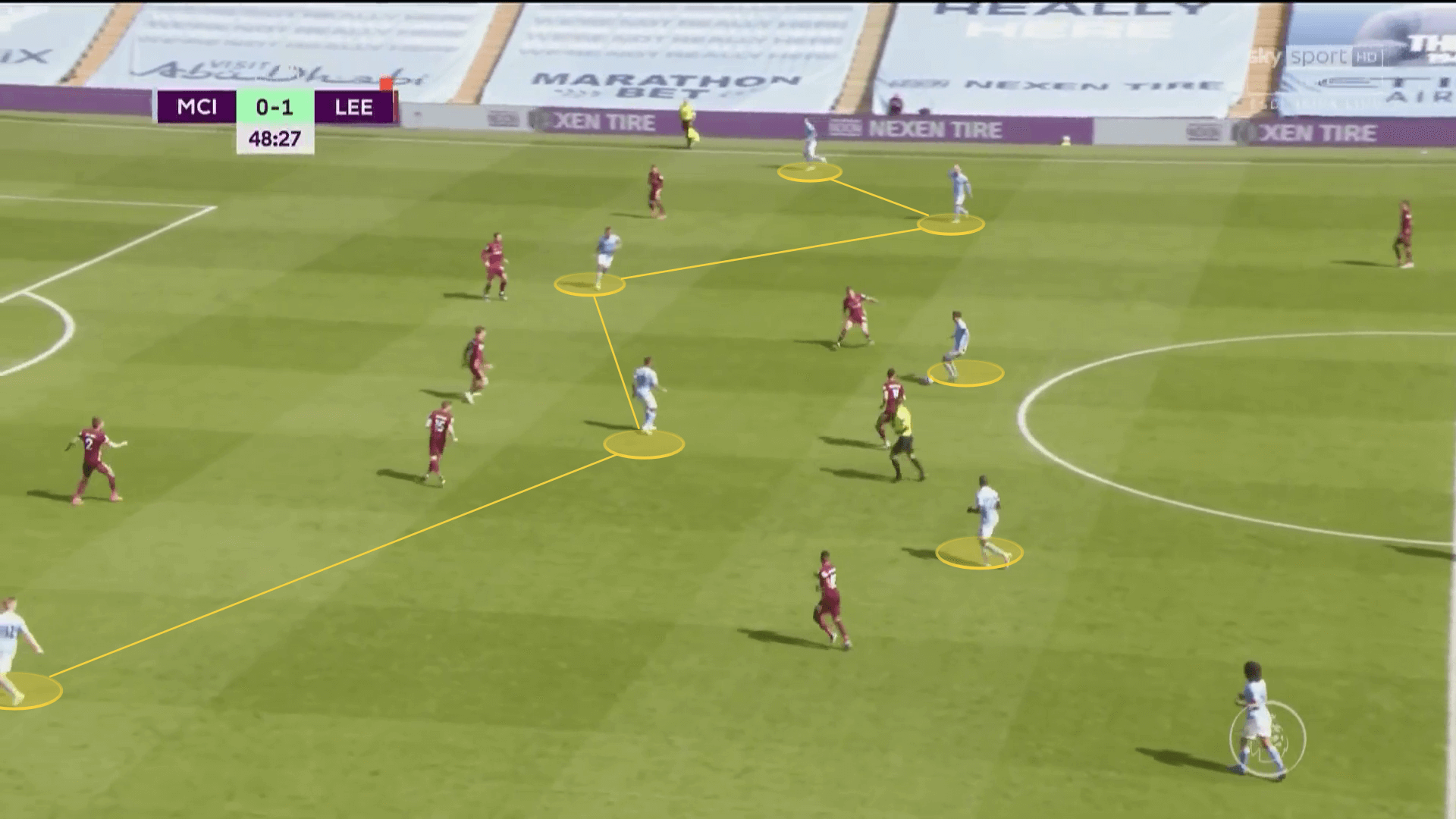
This way the opposition are forced to cover the more advanced players that threaten the goal which releases the pressure on the centre-backs and allows them to circulate the ball at the back unbothered for longer periods. This allows City to move around the midfield to open the passing lanes and provide the defenders with quality passing options for ball progression.
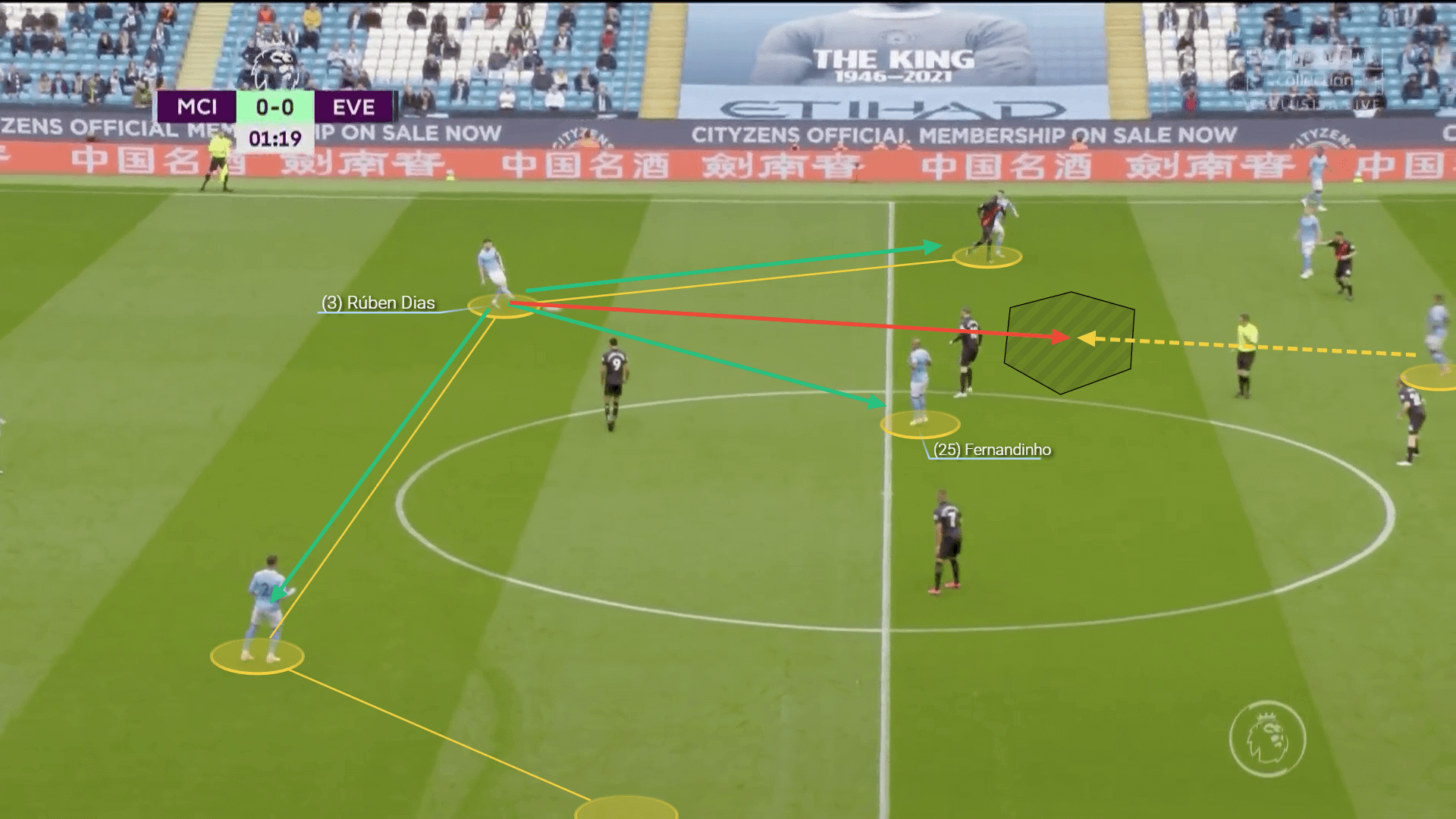
He is rarely out of position and is the less risky centre-back compared to John Stones, which is why this partnership proved to be this successful. He provides the Englishman with additional support and gives him more freedom to move into a more advanced position and complete line-breaking passes. We’ve seen Stones in a much more advanced position throughout the season, where he is way more suitable for City’s risky attacking approach than Dias. This though is beneficial for the team as they use Dias’ confidence on the ball and work under pressure to retain possession and support his fellow defenders’ riskier movement.
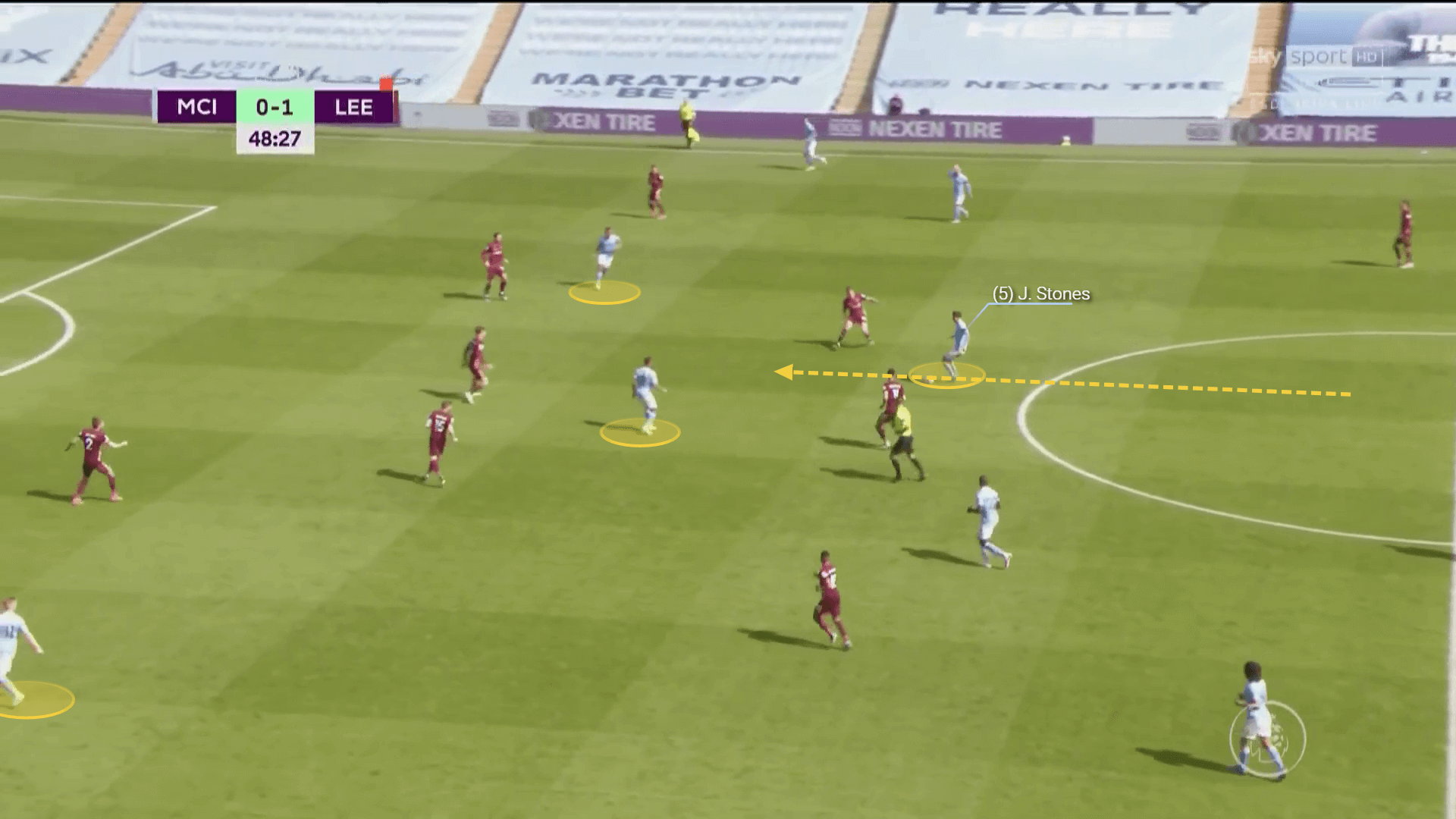
Although he prefers to rely on the safer options, his spatial awareness is very important for ball progression since he is able to pass the ball to the midfielders accurately and in zones that allow quick one-touch pass combinations that can easily dismiss the opposition. His awareness allows him to complete long-range passes directly to the attacking players and bypass the opposition’s pressing structures.
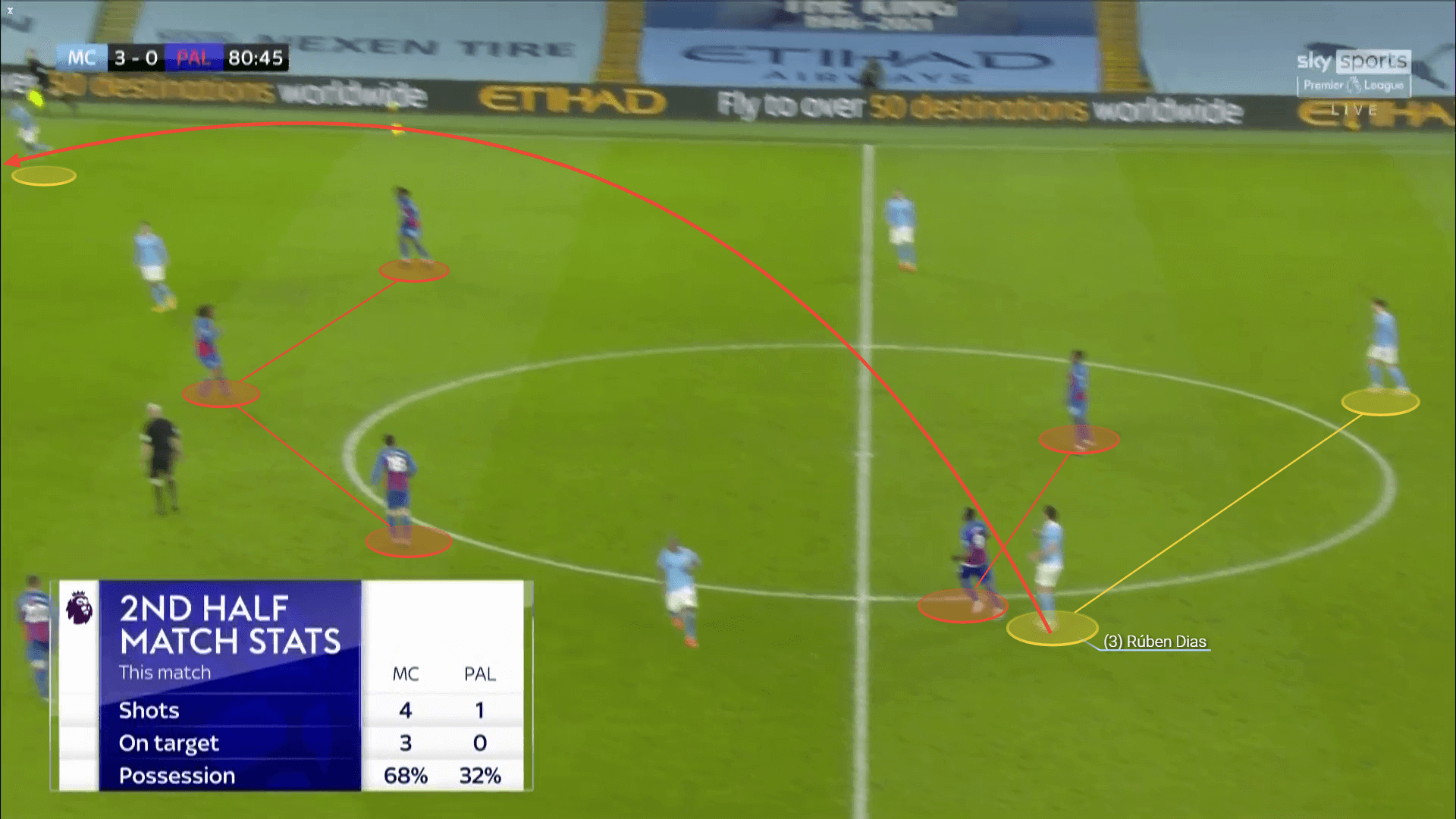
Conclusion
As our analysis showed, Dias has helped City in implementing Guardiola’s vision on the pitch and providing defensive solidity as well as support to their possession-based approach. He brought balance and defensive consistency that the Citizens have lacked before and most importantly became the leading figure in defence that the team were missing after Kompany left.






Comments